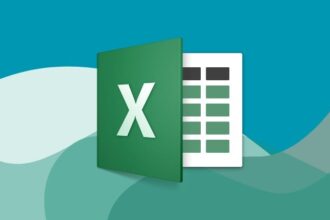What
You’ll Learn
You’ll Learn
- API Documentation using Swagger Tool with NODE JS
- Swagger (now known as OpenAPI) is a widely-used specification for documenting and designing RESTful APIs.
- Installation and Setup
- API Documentation Annotate your Node js code
- Swagger Configuration: Create a Swagger configuration file,
- Generate Swagger Specification
- Serve Swagger UI
Requirements
- Should have node js
Description
Swagger (now known as OpenAPI) is a widely-used specification for documenting and designing RESTful APIs. It provides a standardized format to describe the structure, endpoints, request/response formats, and other details of an API. When combined with Node.js, Swagger can be used to generate comprehensive and interactive API documentation. Here’s a description of using Swagger for API documentation with Node.js:
-
Installation and Setup: Start by installing the necessary dependencies. In a Node.js project, you can use npm or yarn to install the swagger-ui-express and swagger-jsdoc packages. The swagger-ui-express package allows you to serve Swagger UI, while swagger-jsdoc is used to generate the Swagger specification from JSDoc comments in your code.
-
API Documentation with JSDoc: Annotate your Node.js code using JSDoc comments to provide descriptive information about your API endpoints, including parameters, request/response types, and any other relevant details. JSDoc annotations follow a specific syntax and structure, allowing you to define routes, methods, and models.
-
Generate Swagger Specification: Use the swagger-jsdoc package to generate the Swagger specification from your JSDoc annotations. Point the package to your JSDoc comments and the Swagger configuration file. Running the generation script will produce the Swagger specification file (JSON or YAML format) based on your code comments.
-
Serve Swagger UI: With the Swagger specification file in place, use the swagger-ui-express package to serve the Swagger UI interface. This UI allows users to interactively explore and test your API documentation. Import the swagger-ui-express module in your Node.js application, and configure a route to serve the Swagger UI using the generated Swagger specification file.
-
Testing and Interacting: Launch your Node.js application and navigate to the route specified for the Swagger UI. You should see a user-friendly interface that presents your API documentation. Users can browse through the available endpoints, view request/response examples, and even test the API directly from the interface.
-
Keeping Documentation Updated: As you make changes to your API endpoints or add new features, remember to update your JSDoc comments accordingly. Running the Swagger generation script again will update the Swagger specification file, ensuring that your API documentation remains accurate and up to date.
Using Swagger for API documentation with Node.js helps improve the developer experience and allows consumers of your API to easily understand and interact with your endpoints. The interactive nature of Swagger UI makes it a valuable tool for both API developers and consumers.
In this course, you will learn about swagger API documentation automation. This is a very nice tool and important too.
Swagger UI allows end-user to directly interact with API without having any of the implementation logic in place. It’s automatically generated from your OpenAPI Specification with the visual documentation making it easy for back-end implementation and client-side consumption.
Other benefits are Swagger UI works in any development environment and can run in any browser, be it locally or on the web.
Almost all organizations are using the swagger tool to write API documentation.
So, in this course I will explain below things:
· Introduction to Swagger
· Swagger installation in Node JS
· Writing first documentation for API
· Writing GET method docs
· Writing GET with Param docs
· Writing GET with Schema docs
· Writing POST method API docs
· Writing PUT method API docs
· Writing Delete method API docs
If you already know how to write API using node js, then this course will be very helpful for you, although I have explained basic swagger only which is needed in the project.
After finishing this course,
I hope you will get the knowledge to write API documentation and test restful APIs.
So, just let me know if you learn something from this course.
Who this course is for:
- API Developer
- Node JS developer
- Developer






